Uncanny X-Men, Part 22: 1978 – The Savage Land, Japan and Psionic Throwback Thursday!
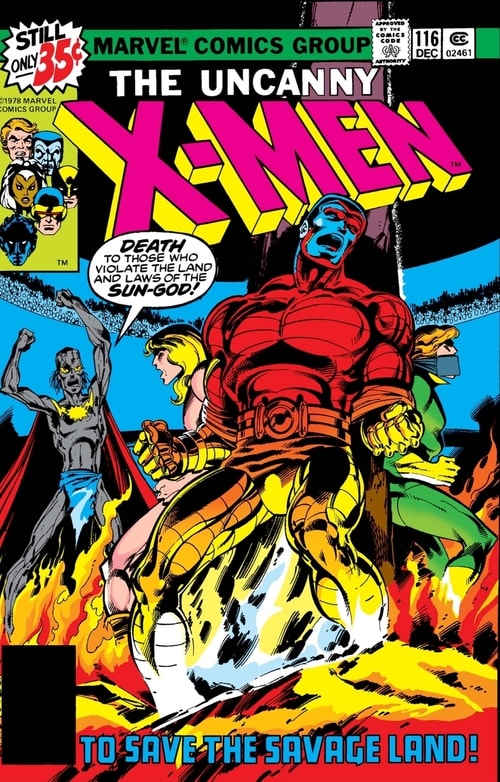
Welcome to my increasingly Quixotic reread of the Uncanny X-Men. I started in 1963 and am now in 1978, and in my favorite period, the legendary Claremont/Byrne/Austin run. In this installment, I’m covering Uncanny X-Men #115 – 119. It’s a special run for me. As a kid, issues #116 and #118 were among the earliest great trades I’d made, but as with all filling of back issues, I didn’t get the in-between stories until years later. But in those days, I suppose we just lived with the chapters we had and filled in the gaps with our imaginations.
When we last left our heroes in issue #114, Phoenix and Beast had escaped from Magneto’s volcano base, but thought that the rest of the X-Men had died. In fact, they’d dug their way under the volcano and over days had tunneled and emerged to their surprise in the Savage Land. And there, Storm was attacked by Karl Lykos, who turned into Sauron. It sounds a bit silly when I summarize it like that, but it’s super cool and issue #115 opens with the new X-Men facing Sauron, without any training. Check out Bryne and Austin’s double-splash:
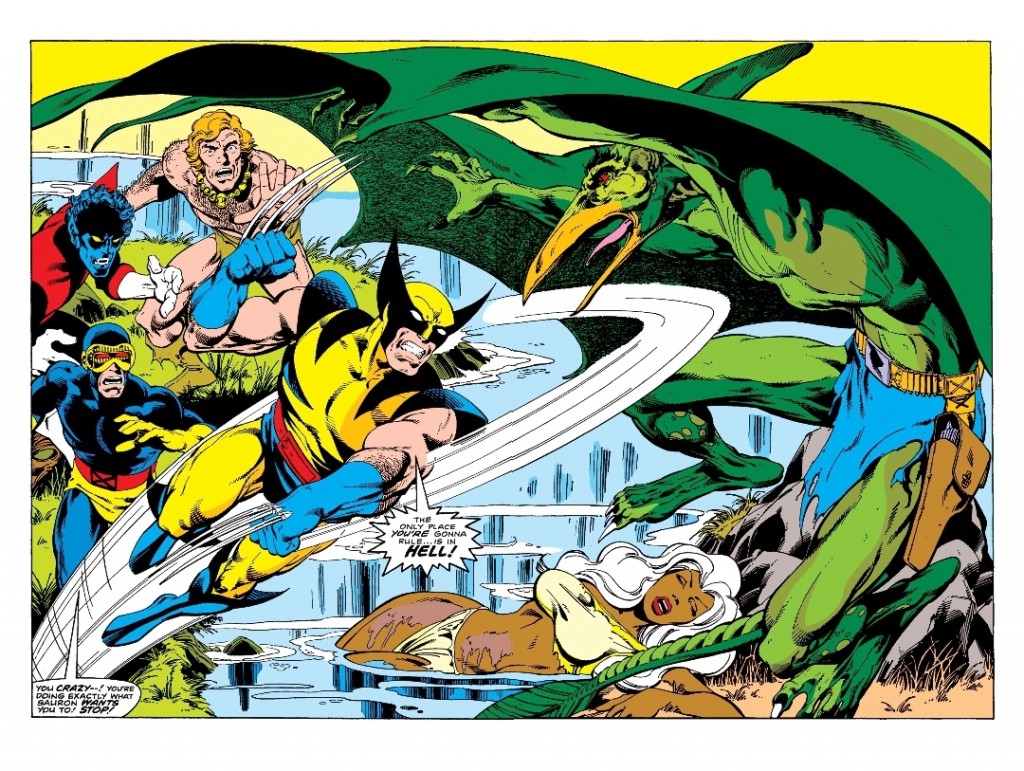
It immediately goes south, because of course Wolverine charges without listening, little realized that as Cyclops explains to Banshee, Sauron’s hypnotic powers make Mesmero look like a lightweight. All of a sudden, they’ve got a ferocious Wolverine opponent.
Cyclops is an emotionally and intellectually complex character in this period of the X-Men, and Claremont leans into his strategic and tactical abilities in every battle, and when the X-Men listen to him they win. Banshee luckily is one of the team players, and despite Sauron’s power, and Wolverine’s enthusiastic attempt to gut them, they prevail, enough that Sauron turns back into Karl Lycos.
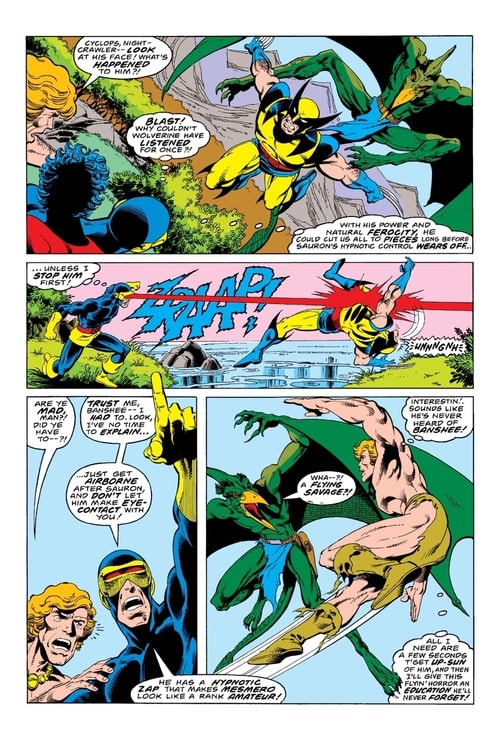
The X-Men try to leave the Savage Land, but a bitter cold comes over the eternally tropical valley in the Antarctic, and Ka-Zar comes seeking their help. It turns out that a priestess called Zaladane has succeeded in resurrecting some kind of petrified god called Garrok, who promptly imposed a kind of Star Wars Imperial order over the Savage Land, including capping the central volcano to power his holy city where everyone in the Savage Land can live under his rule. And so begins issue #116, with another amazing splash followed by a double splash:
Ka-Zar, Colossus, Banshee and Cyclops get captured by Garrok’s ‘air force’ (you have to see it to believe it – it’s cool. That leaves Wolverine, Nightcrawler, Storm and Zabu, leaderless and outgunned. This is the first time we see Wolverine’s gifts with animals as he tells the sullen and very dangerous Zabu the saber-toothed tiger to go for help and the tiger goes. Cue the oooohs and aaaahs.
It is so fun to see these early steps of Wolverine’s characterization. Remember, by X-Men #116, Wolverine had been in about 24 issues of X-Men, 2 issues of Hulk, and had a few middling guest appearances. That’s it. In 1978 the entire Wolverine corpus was about 30 issues. It’s about the same with the other new X-Men too, but given Wolverine’s extreme ubiquity as of the mid-80s, it’s hard to imagine a time when this was all that was known about him.
Wolverine takes charge and leads them into the Petrified God’s city and they rescue the X-Men and save the day. It’s a great issue and Storm has a great set of moments at the end that further powerfully defines her ethics and character flaws. Beautiful art and story work.
Issue #117 is a cool interlude and I first read it in a B&W digest form around 1982 or 1983. Charles Xavier and the alien Shi’ar Princess Lilandra are talking about Charles going with her as she takes up her imperial throne in space. He has no more X-Men and his heart is broken and he tells her of his first encounter with an evil mutant, 20 years earlier, the encounter that taught him what he had to do with his gifts.
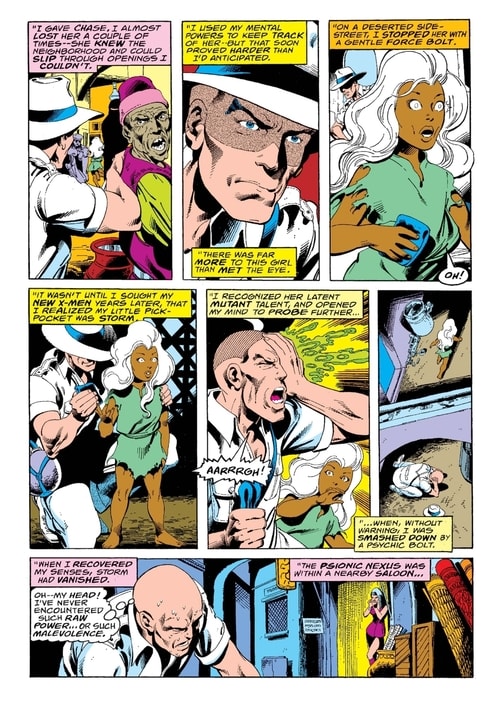
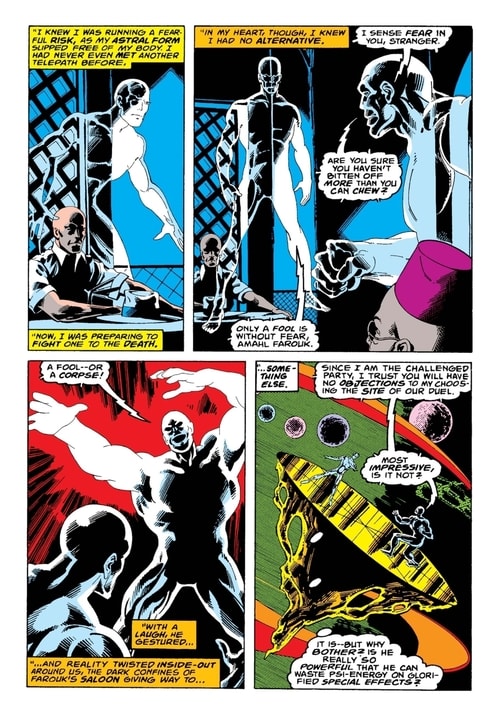
The story is called Psi-War, but it’s so much more than that. I illuminates Xavier’s history, but also some of Ororo’s, and advances the Charles-Lilandra relationship, and gives us a knife-in-the-heart moment with a grieving Jean. I was recently listening to a podcast interview (here) with comic writer Mark Sable. It’s a great interview and one of the things Mark mentioned was how as a kid, the X-Men was basically the most sophisticated narrative available to kids. That resonated with me. Until I got into novels, the X-Men‘s soap operatic and character-focus was certainly more involved than anything I saw on prime-time TV or Saturday morning cartoons.
The X-Men in the Savage Land are picked up by a Japanese sea vessel on a secret mission and so they can’t disembark until the ship gets back to Japan. When they get there in issue #118, they find Tokyo on fire.
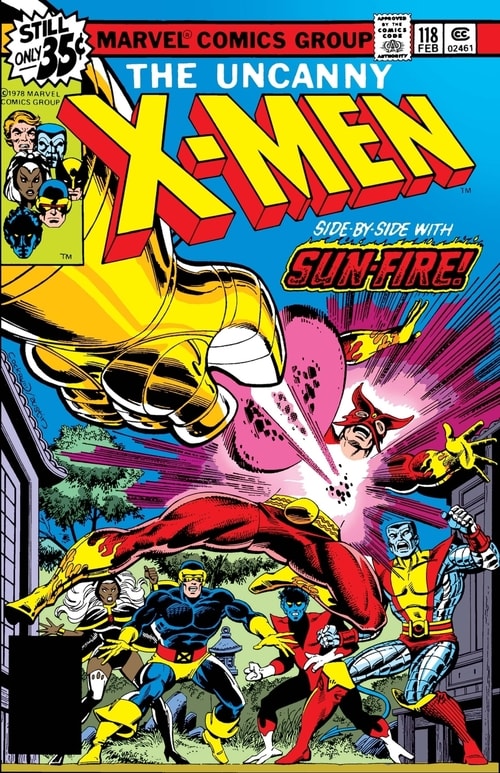
They sneak into the disaster city and don’t know what’s going on until it’s revealed that Wolverine speaks Japanese. It’s a bit deus ex machina, but it’s also not; Wolverine is a tight-lipped people-hater, and so of course the X-Men are learning about him only when something comes up.
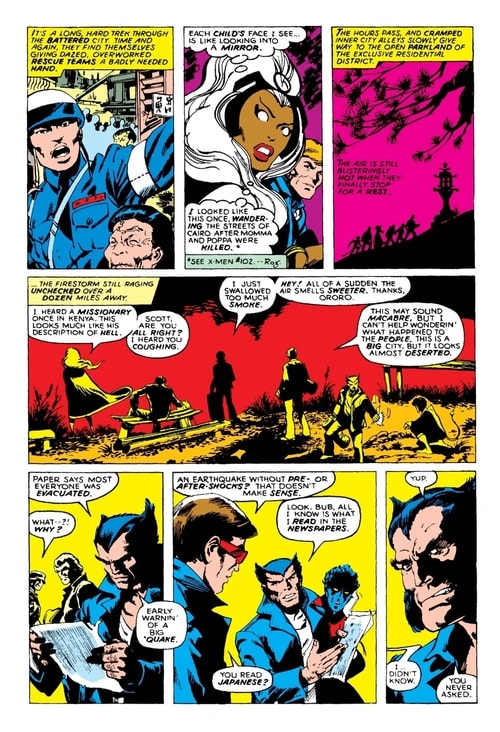
The X-Men have no papers, no money and they’re in the wrong hemisphere, and the only person they know here is Sunfire, who stomped out on them in issue #94. They find him, and find out he’s defending Japan against high-powered terrorists. So of course they step in.
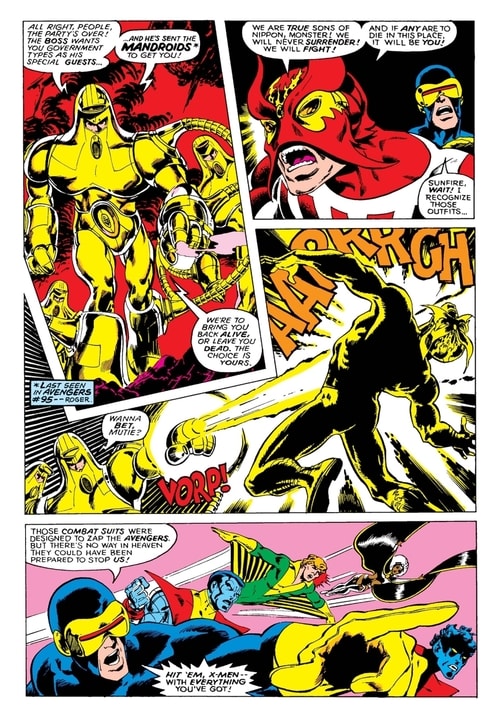
I sometimes wonder about the international trips and adventures the X-Men have and wonder how it got to be. It turns out that “mutant Blackhawks” is what Roy Thomas originally had in mind when he asked Len Wein for a reimagined X-Men. And with Sunfire as a Japanese mutant, it’s a logical landing point for the narrative. But Claremont was also writing Iron Fist, and characters included Colleen Wing, who has ties to Japan and she shows up here too. When I was a kid, I’d always wondered why there were so many Power-Man and Iron Fist links, but now that I’m a writer, I realized Claremont was creating continuity across the books he had control over. Remember, this was before most events (exceptions are of course The Kree-Skrull War and the yearly JLA-JSA cross-over).
The action, excitement and character development in these two issues is amazing. It’s not only the issue where Wolverine begins his doomed romance with Mariko Toshida, but this is a major hero moment for Banshee. Only Banshee can stop the super-villain because of the nature of his powers, but it costs him.
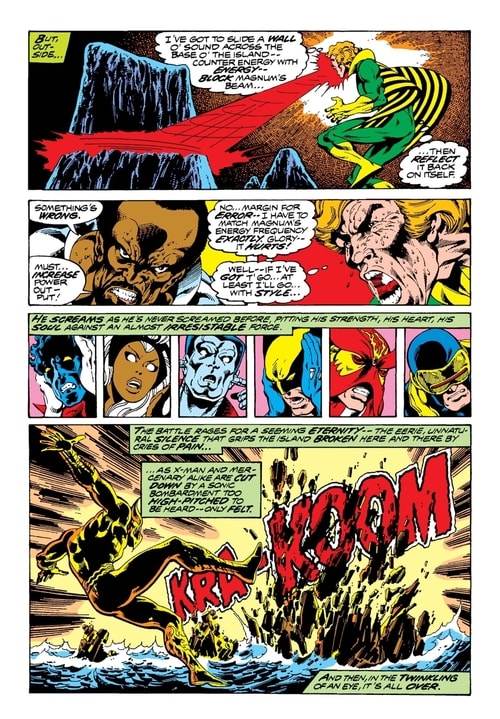
Although the full damage to Banshee’s powers won’t be revealed for a while, we as readers have just read the depowering of Banshee. He’d a powerful, experienced mutant who’d been pulling his weight with the X-Men and Claremont just burned him out. This is some cold writing on Claremont’s side, some real kill your darlings stuff that once again shows that the stakes in the X-Men are unlike the stakes anywhere else. The behind-the-scenes thinking about getting rid of Banshee is interesting too. Here’s an interview from John Byrne:
“Banshee, I always thought, didn’t really belong” subsequent artist John Byrne revealed in The X-Men Companion, “which is why I did what I could to get rid of him and finally succeeded in getting rid of him. He was the older, wiser head who was unnecessary because there was Xavier. His power was a long-distance zap, which is unnecessary because of Cyclops. His costume lost any outstanding points it had as soon as we had Phoenix, because he was the redhead with the green-and-yellow costume. So I liked Banshee a lot in terms of his personality but I could never really think of him as belonging in the group and I remember after we wrote him out with X-Men #129 (1980) – the issue that introduced Kitty Pryde – some five or six issues later, I realized he hadn’t been in the book for five or six issues and that I hadn’t missed him.”
Sean Cassidy will continue to play a role in the near future without powers before leaving the X-Men. This is a big flipping deal because we won’t see Banshee as a superhero again for more than a decade. That’s as long at Starlin left Adam Warlock dead. Claremont and Cockrum and Claremont and Byrne continue to make consequential changes to their part of the Marvel Universe.
If you want to catch up on any of my other posts about the X-Men, they’re below:
- Part I: Introducing The Strangest Super-Team of All: Uncanny X-Men #1 (Nov 1963) to #20 (May 1966)
- Part II: Early Guest Appearances (1964-65), Uncanny X-Men #21-23 (1966), and X-Men: First Class Volume I (2006)
- Part III: X-Men: First Class, Volume II (2007) and First Class Finals
- Part IV: Uncanny X-Men #24-39: The Middle Years of the Original Team
- Part V: Uncanny X-Men #40-48: Death and Separation
- Part VI: Uncanny X-Men #49-53: Reunion and Family and Steranko
- Part VII: Uncanny X-Men #54-58 — Havok and Neal Adams
- Part VIII: Uncanny X-Men #59-66: The Savage Land and the End of the Silver Age X-Men
- Part IX: Filling in the Corners of the Original X-Men with Savage Hulk #1-4
- Part X: John Byrne’s The Hidden Years #1-4
- Part XI: Storm, the FF and Phoenix in John Byrne’s The Hidden Years
- Part XII: X-Men Guest Appearances in 1971-1972 and Hank gets Furry!
- Part XIII: Englehart’s Bronze Age Monster Horror – The Beast
- Part XIV: 1973 and 1974 – Magneto, the Hulk, Banshee and post-Watergate Captain America
- Part XV: 1974 and 1975 – The Last Tales of the Original X-Men
- Part XVI: Enter Wein, Claremont and Cockrum in 1975
- Part XVII: 1976 — Sentinels in Space and the Rise of Phoenix
- Part XVIII: Juggernaut and Magneto — For the Very First Time
- Part XIX: Phoenix, Firelord and the Imperial Guard
- Part XX: Iron Fist, Blame Canada and Some Strike-Outs
- Part XXI: Epic Magneto Triumph and more X-Men Death!
- Part XXII: 1978 — The Savage Land, Japan and Psionic Throwback Thursday!
- Part XXIII: 1979 — Chaos in Canada with Alpha Flight!
- Part XXIV: Arcade, Murderworld and their First King-Sized Annual
Derek Künsken writes science fiction in Gatineau, Québec. His first novel, The Quantum Magician, a space opera heist, was a finalist for the Locus, Aurora and Chinese Nebula awards. Its sequel, The Quantum Garden was an Aurora finalist as well. His third novel, The House of Styx, got a starred review in Publishers’ Weekly and the Library Journal and is out in audio and ebook (order link); and the hardcover will release in April, 2021.
.
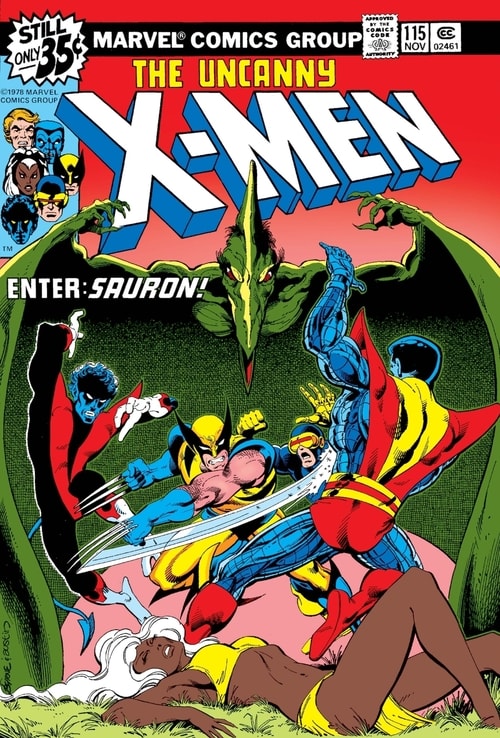
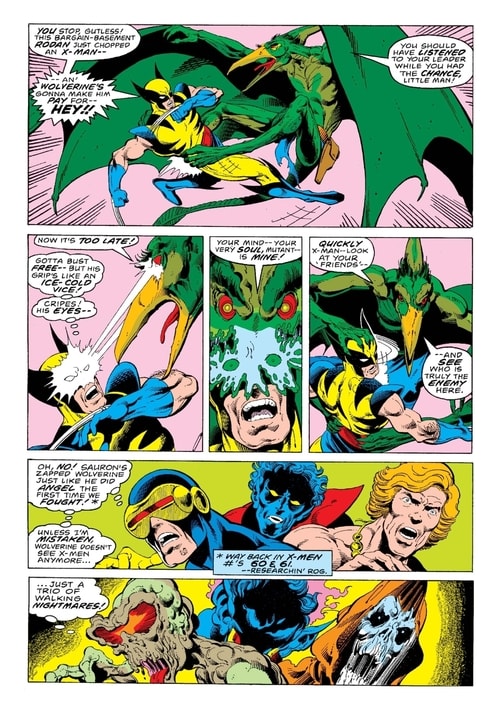
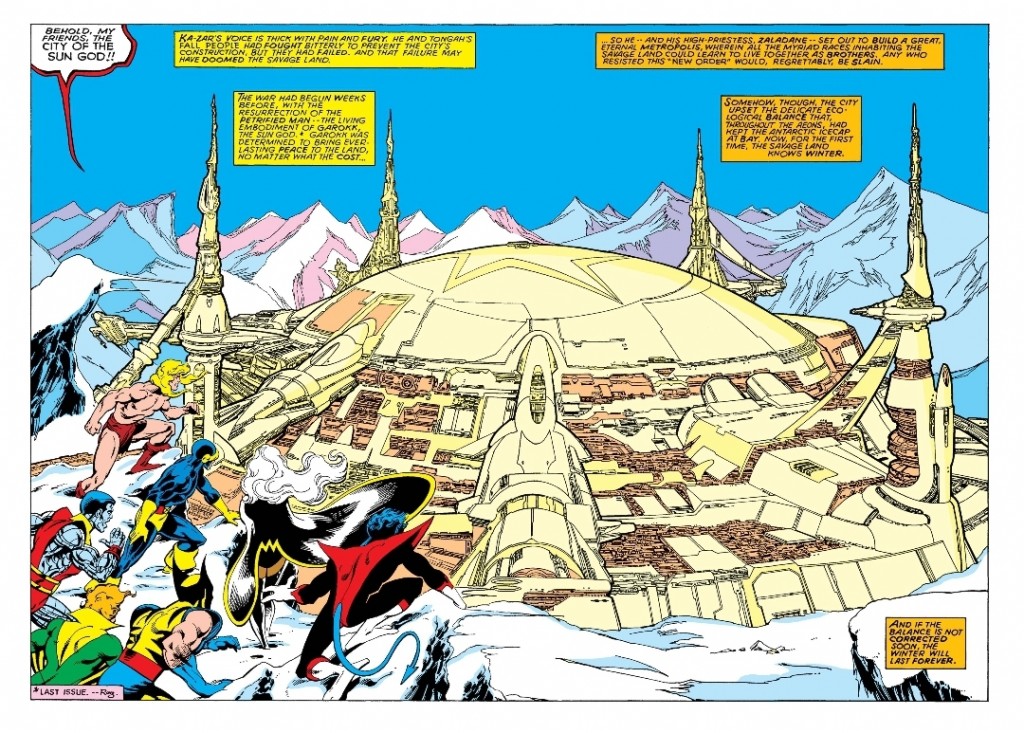
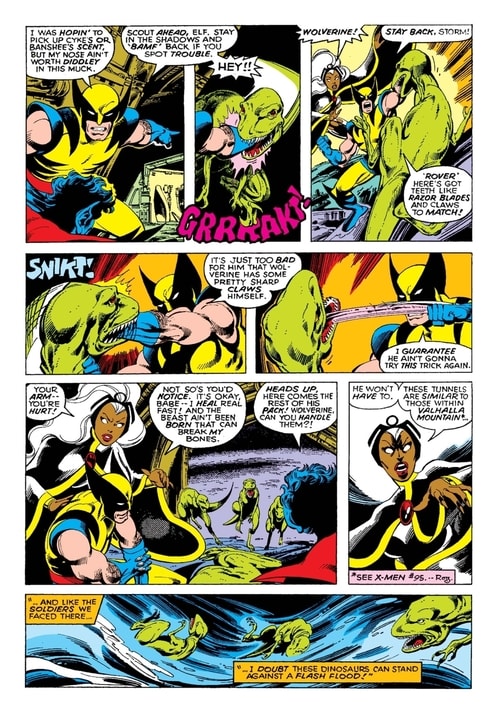
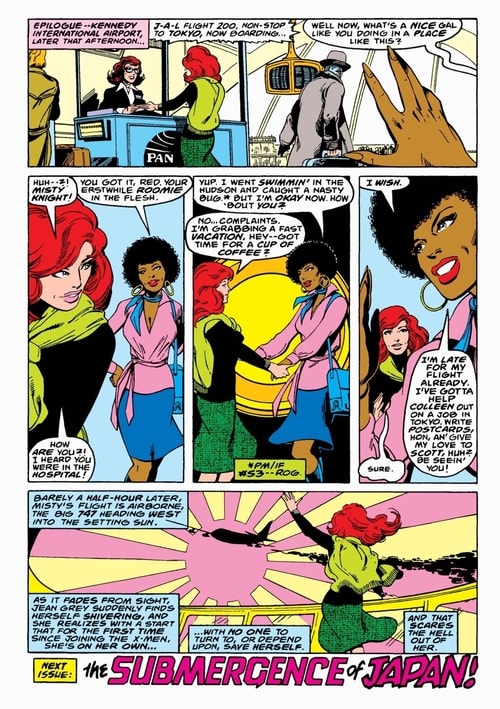
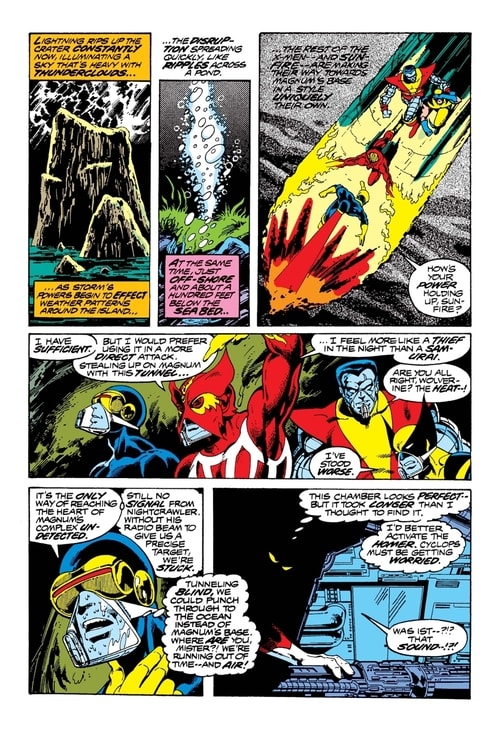
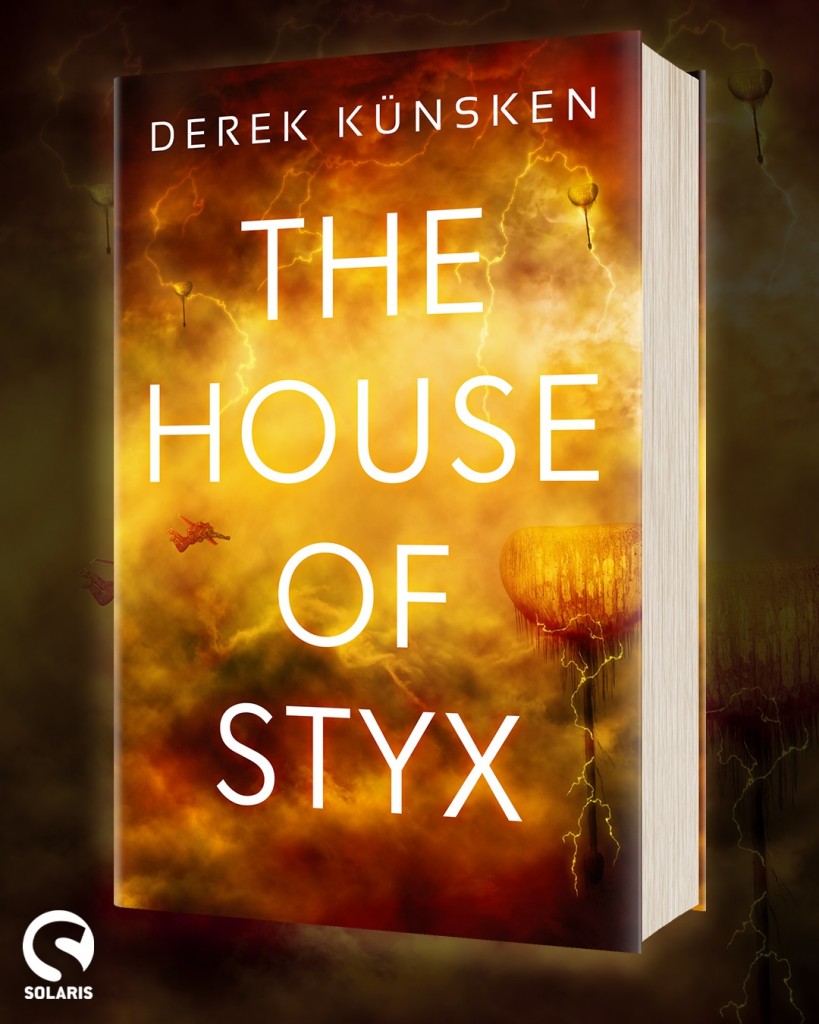
These Byrne issues are where it all really takes off. Byrne’s art has a flow to it that makes you forget what page your on instead of checking to see how many you have left.
There are only a handful of other comics artist where their panel design is so good I almost feel like I’m watching a movie. Byrne on these x men issues hits that spot (Stan Sakai is another)
You’re so right Glenn. I don’t know if it’s his art alone that does it, or if it’s just that him and Claremont are getting into the groove of things? There is a powerful creative chemistry here that I don’t think I would have said was exactly in 108, 109 or 111. Your comment also made me relook at the pages I posted.
– The page with Sauron mind-zapping Wolverine is brilliant in terms of storytelling and I love the little spin of the head.
– The page on the hillside in Tokyo is interesting in the way that Byrne draws the eye to the top two faces, then almost uses the middle of the page for negative space and mood and then brings us to nearing faces all along the bottom.
– my favourite of these pages for layout though is the last where Banshee saves the day; the page’s symmetry is another layer that screams powerful and evocative.
I agree about Banshee. This arc is the first time i enjoyed him as a character. He gets a couple of other neat scenes in the following issues.